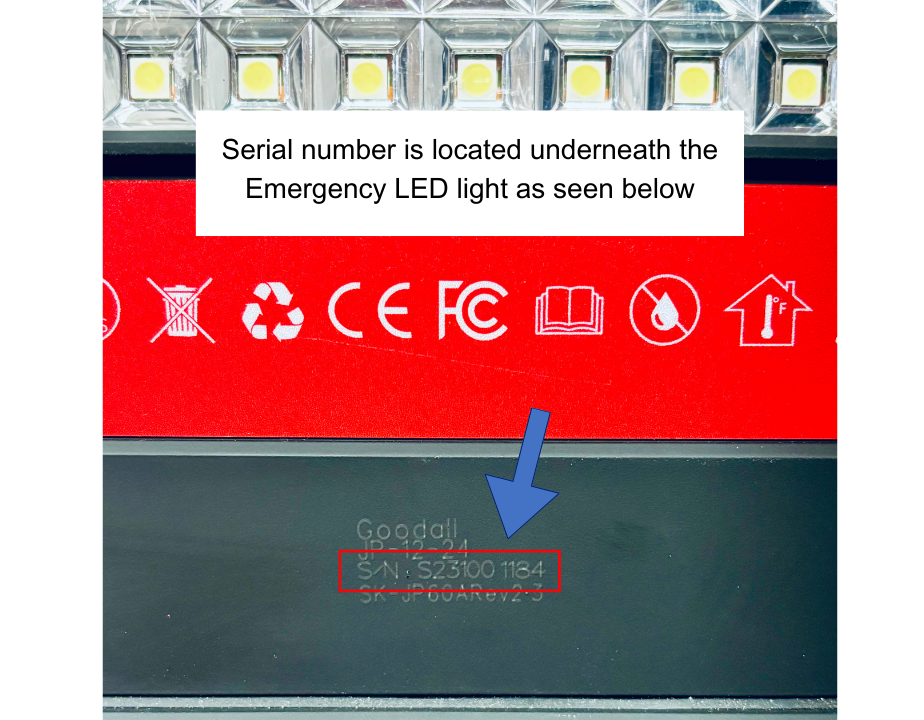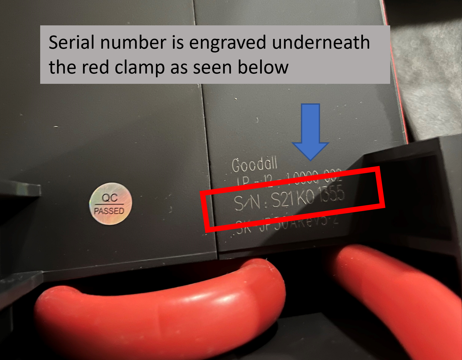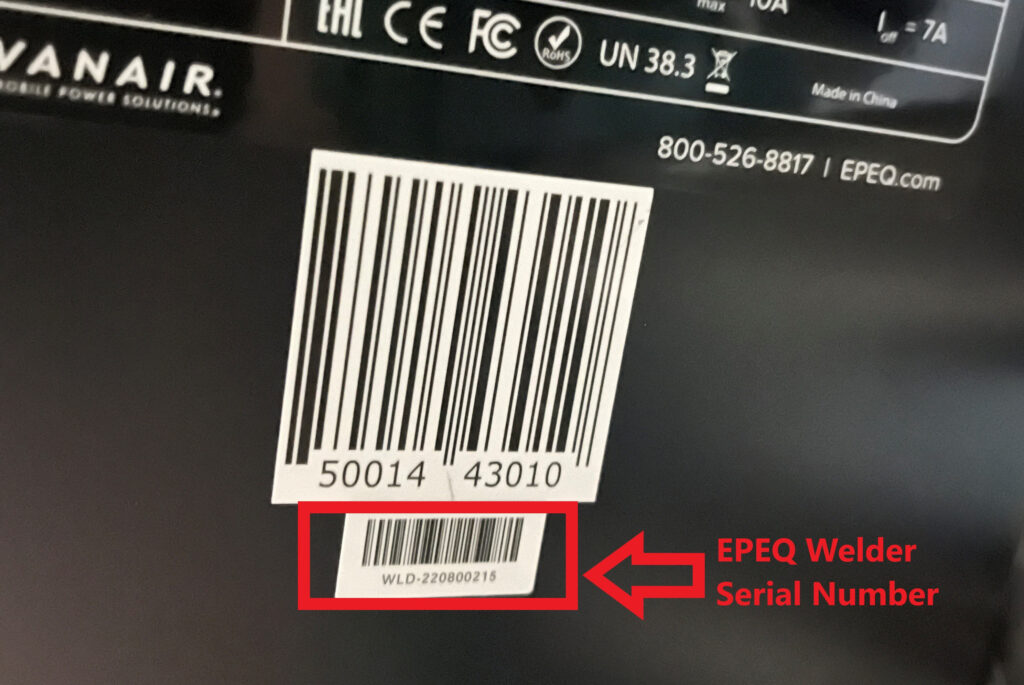When I was first introduced to the world of air compressors it was a bit overwhelming (to say the least). But with learning anything new if you start by understanding the basics– you can then scale. Since there are a myriad of air compressors choices on the market, I decided to begin by wrapping my head around studying the technical units of airflow measurement. Just when I thought I had the fundamentals down, even more confusing was the variety of numbers and ratings associated with the different features and benefits of compressors. If you are new to understanding air compressors, have recently changed roles and are looking to dip your toe in the deep end, or a compressor aficionado that likes to test your knowledge– here’s what you need to know to evaluate the right air compressor for your needs.
Cubic Feet per Minute (CFM)
CFM is an acronym for Cubic Feet per Minute and is the most common way to measure airflow. More specifically, CFM is a measure of volume used to indicate the airflow from an air compressor over time (volume/time) and it is measured at atmospheric conditions in which the compressor is operating. All compressors have specifications for cubic feet of compressed air per minute (CFM) of flow from its discharge port. Consequentially, CFM is the most important item to know and should dictate your compressor choice. Yes, Folks… knowing CFM is key! If you know the power requirement for the tool that you’re using the air compressor to operate, you’re in business– knowing this will determine your CFM requirement. Simply put, the higher the CFM rating of a compressor is, the bigger the job and tools can be used. CFM is unit of measurement of airflow for systems in which the air’s temperature and pressure are unknown.
Standard Cubic Feet per Minute (SCFM)
SCFM is the acronym for Standard Cubic Feet per Minute. SCFM is the flowrate of a gas or air through a compressor at a “standard” atmospheric temperature and pressure condition. I’m going to stop right here because if you’re anything like me you’re already asking the question, “what is standard and how is it determined?”
You cannot compare two units to one another unless the air they are compressing is identical. The Compressed
Air and Gas Institute (CAGI) and the American Society of Mechanical Engineers (ASME) have established “standard
conditions” at sea level as:
• 14.7 PSI (atmospheric pressure)
• 68° Fahrenheit
• 36% relative humidity
SCFM is a common volumetric measure of air which an air compressor delivers to a pneumatic tool. The reason tools are rated in CFM is because their performance is dependent not only on the air volume, but also on the air density. By using standard conditions, the density is fixed, and the volume can be used to compare one tool against another. An example of this would be a 90lb pavement breaker– the air required to operate the tool would be around 68-85 SCFM at 90 PSI. It should go without saying; but I would be remiss if I did not remind you that “at times” you may be working outside of what would be considered “standard” conditions.
Inlet Cubic Feet per Minute (ICFM)
To round out the trifecta of measurements used to evaluate compressed airflow in this writing is Inlet Cubic Feet per Minute (ICFM). ICFM is a measurement of the airflow entering the compressor at the atmospheric pressure and temperature in which it is operating. This airflow measurement is indeed accessed prior to any component of the compression equipment, such as an inlet filter. A tech tip worth noting is that a pressure drop occurs as air passes through the inlet. This pressure drop cannot be ignored since ICFM is measured before the air passes through the inlet. Keeping this in mind when comparing compressor ratings, it is important to ensure that the inlet conditions are at atmospheric conditions and upstream of all compressor intake filters (or other attachments). Note too that operating environment can affect the compressor output. An example of this would be if the compressor intake is located in an area of high heat, like heat from the truck engine cooling system, the air output of the compressor will be reduced.
Recapping the Difference between CFM, SCFM, and ICFM
Now if you’ve stuck with me until this point, you already knew or learned, the most common air compressor ratings are CFM, SCFM, and ICFM. The difference between CFM and SCFM is that SCFM is measured in a controlled environment with known ambient conditions of pressure, temperature, and relative humidity. Unlike SCFM, CFM is the measurement of the volume flow rate of a system where ambient conditions are variable. Compressors are not rated in SCFM because they are a displacement device, the output volume will not change with conditions in which they operate. However, the SCFM will change if they are operated in an ambient condition different from standard conditions.
Reciprocating CFM is at times rated as displacement or swept volume within the compressor. The actual air delivery will be the displacement times the volumetric efficiency of the compressor. Reciprocating volumetric efficiency (hence CFM delivery) varies considerably more than a rotary screw, which is why they are often rated by displacement. It does, however, make them appear to deliver more air than they truly do. When comparing different compressors, it is important that they are compared in an equal manner.
Since CFM is a generic reference and ICFM simply ties the rating to inlet conditions, ICFM is the CFM at actual inlet conditions at the point of compressor installation. As a reminder, the conditions are specified in terms of actual atmospheric pressure, temperature, and relative humidity. It is interesting to note that “technically” SCFM and ICFM can be used interchangeably if standard conditions are met, and inlet conditions are identical too. In plain English this means that rotary screw and reciprocating compressors’ SCFM and ICFM will be very close.
Various methods of measuring airflow are in use, with varying accuracy. The inline flow meters with a direct readout on a vernier (a device to obtain fine adjustment) which is on the device itself are popular. However, the accuracy of these devices gives only an approximate reading. This is because they are typically calibrated for only one condition of pressure and temperature. Some have a graphical readout which allows for a rough pressure correction. At best, these meters are good for 5-10 % accuracy. If running conditions are different than what the meter was rated for, the accuracy goes down from there.
For accurate CFM measurement a device called a sonic nozzle is used. The sonic nozzle is a precisely machined nozzle shape and diameter, and it discharges directly to atmosphere. When used with temperature, pressure, and barometric pressure devices they are typically accurate to within 1%. The CFM result is a calculation using all the measured data.
Air Tool Consumption
We have been discussing different measurements associated with evaluating air compressors and it would only make sense to take a moment and pivot to a high-level overview of air tools. Air compressors can power a multitude of air tools from a jitterbug to an impact wrench. Best practice to sourcing an air compressor is to decide your current state, and future state, needs for powering various air tools. Since SCFM measures the performance output by the air compressor at a specific temperature and pressure, air tools that require constant air, like a sandblaster, will require a compressor with a larger tank. Once you understand your highest air tool SCFM needed, scale that number for “safety.” Common air tools and their SCFM air consumption can be reviewed on the Vanair® Air Consumption Tool Guide. The air consumption is based on commonly used working pressure of approximately 90 PSI. Please be aware that air consumption fluctuates greatly between air tool manufacturers. For exact information always contact the equipment manufacturer.
Additional Units to Evaluate
As I may or may not have successfully hinted to earlier, there are additional units to evaluate for ratings of an air compressor. These include:
• PSI
Pounds per Square Inch is the amount of air pressure (or force) being delivered by the air compressor itself per square inch. Typically, air tools will require 40 PSI or 90 PSI to get a job done. Tools used in industrial settings and to cut steel, or other metals, will always require a compressor with maximum PSI.
• Duty Cycle
Rotary screw air compressors are encouraged to be used for continuous and medium duty applications. If used for a short duration, a rotary screw should be run long enough to come to full operation temperature to avoid condensation in the oil system. Short duty cycle jobs can be performed if the compressor is kept running during the job and allowed to load and unload as needed. The Vanair® systems have oil temperature controls that will keep the oil at the operating temperature needed. Conversely, reciprocating air compressors are designed to operate in an on/off or cyclical manner. Duty cycle refers to the time between the on and off periods. When a compressor is “off” it doesn’t necessarily mean the machine powers down just that it will not pressurize for extended periods of time. All compressors are rated for a specific duty cycle. If the reciprocating compressor has discharge valve unloaders the compressor can continue running in an unloaded state to satisfy the duty cycle requirements. For a compressor without discharge valve unloading, there are two possibilities for satisfying the duty cycle. One would be an independent unloading valve that vents the discharge air to atmosphere. The other would be stopping the compressor during the unload part of the cycle. For example, a 60% duty cycle means the compressor runs under load 60% of the time and unloaded or stopped 40% of the time.
• Gallons
A reciprocating air compressor’s tank is measured in gallons. As you may be guessing correctly right about now- the larger the tank, the more air that can be pressurized at any moment on the job. Therefore, large rotary screw compressors are preferred for jobs needing continuous airflow, like sewer rehabilitation. On the other hand, reciprocating compressors are used for short jobs using pneumatic tools, like those performed by tire trucks. Rotary screw units do not require an air storage tank as they will modulate the inlet valve to match air output to the demands of the application. Generally, a good rule of thumb is one gallon of tank storage per compressor CFM. So, a 30 CFM compressor should have at least a 30-gallon tank.
• Horsepower
HP is a common acronym for horsepower and measures the power output of the engine (or motor) in an air compressor. Basically, the greater the HP number the higher the CFM output will be. Generally, a good rule of thumb is that 1 HP equals 4 CFMs of compressed air at 90 PSI.
Vanair® is Here to Help
Congratulations for reading this far; I hope you’ve been learning and following with ease! Afterall, knowledge is power. The units- CFM, SCFM, ICFM, PSI, duty cycle, tank size in gallons, and HP- listed to evaluate air compressors can be complex, this I understand. Nevertheless, having a basic understanding of units of measure are important since it speaks to how the air compressor you purchase will power the tools needed to get the job done.
Since 1972, Vanair®, a Lincoln Electric Company, has been providing Mobile Power Solutions® and offers the most comprehensive product line of vehicle-mounted: air compressors, generators, welders, hydraulics, Electrified Power Equipment®, chargers/boosters, engine starters and custom products in the world. Where you need it, when you need it, and how you need it… Vanair’s there. And we’ll be there for you too! The Vanair® team of technical experts are here to help and only a call away at 1-800.526-8817 or an e-mail away at media@vanair.com.




